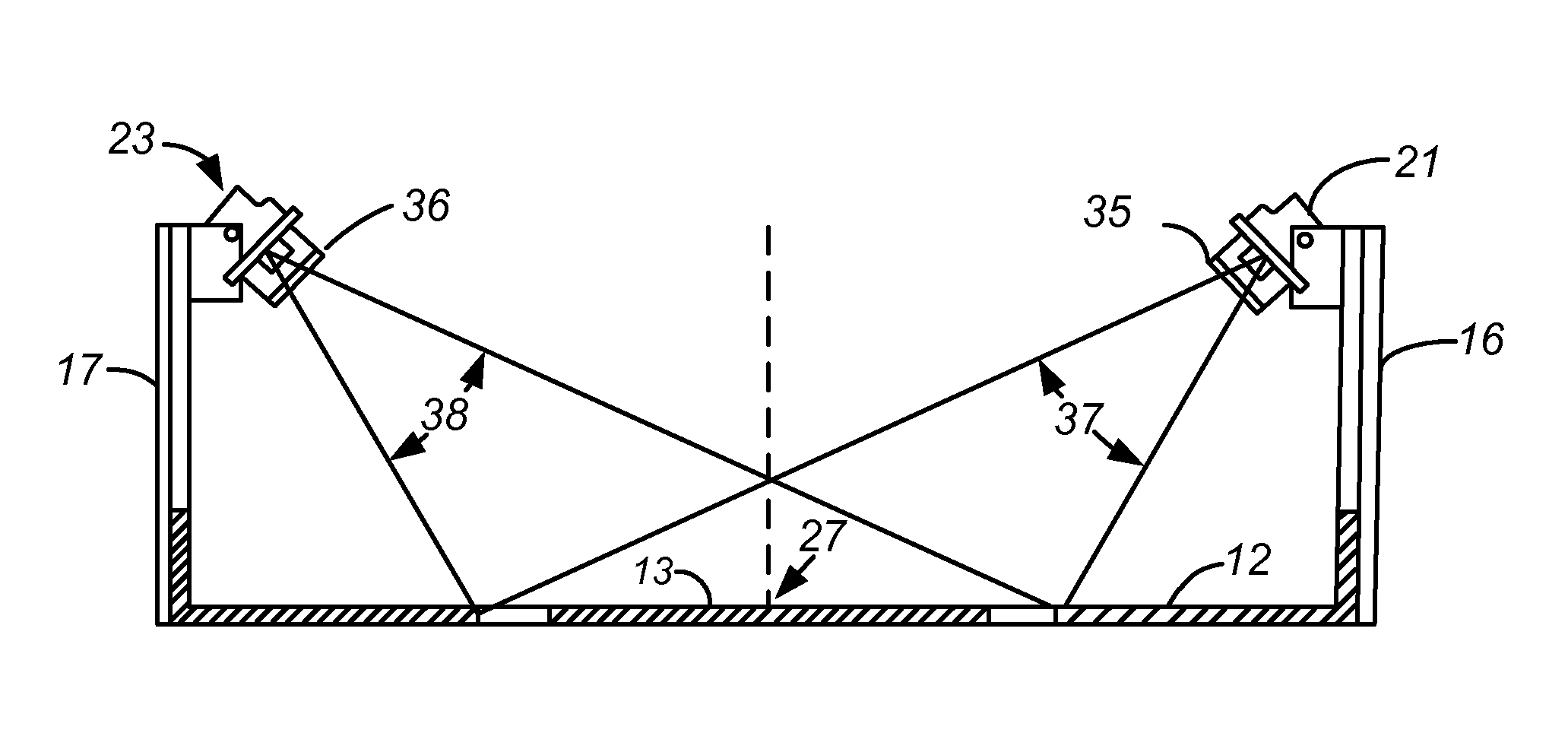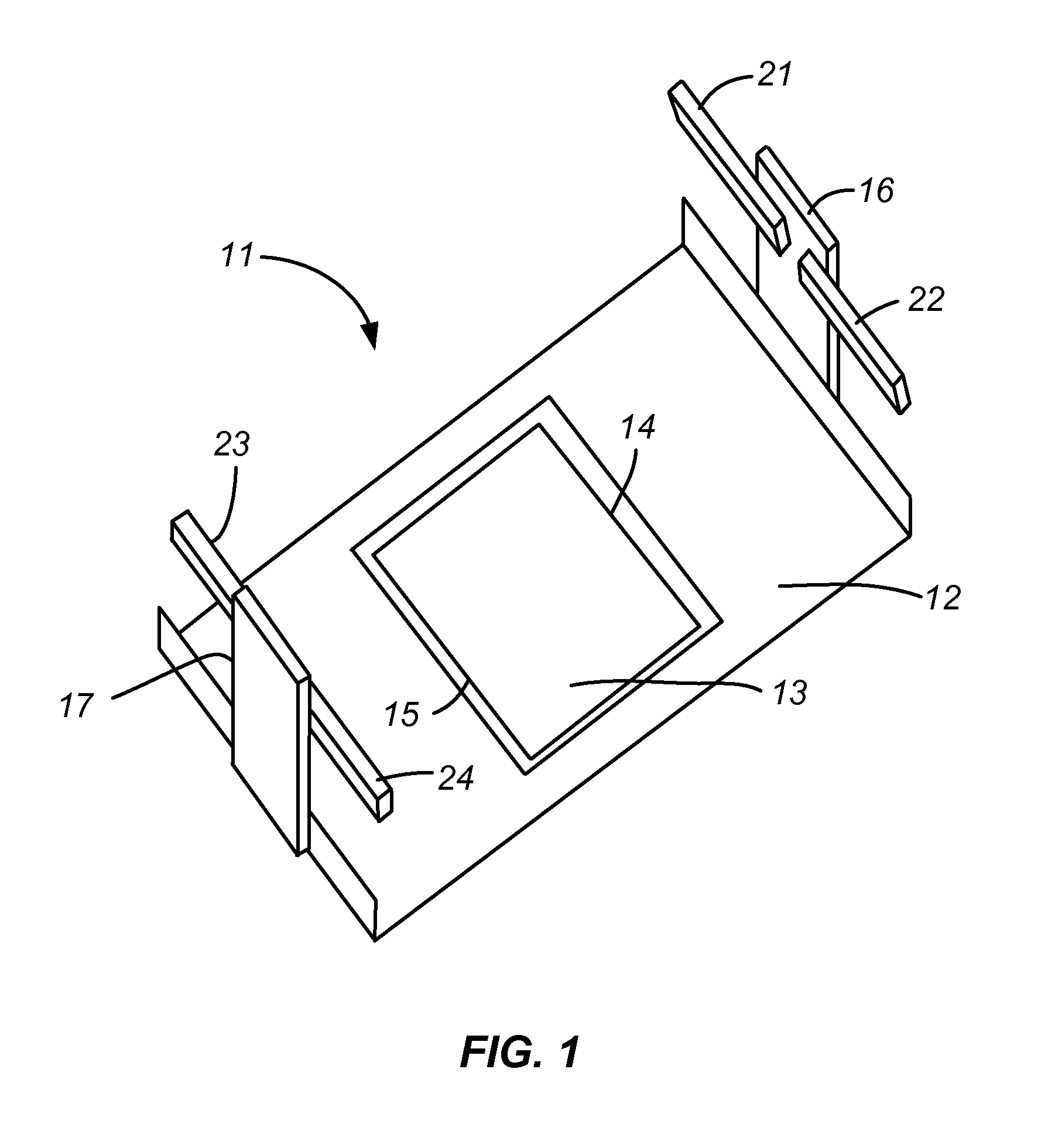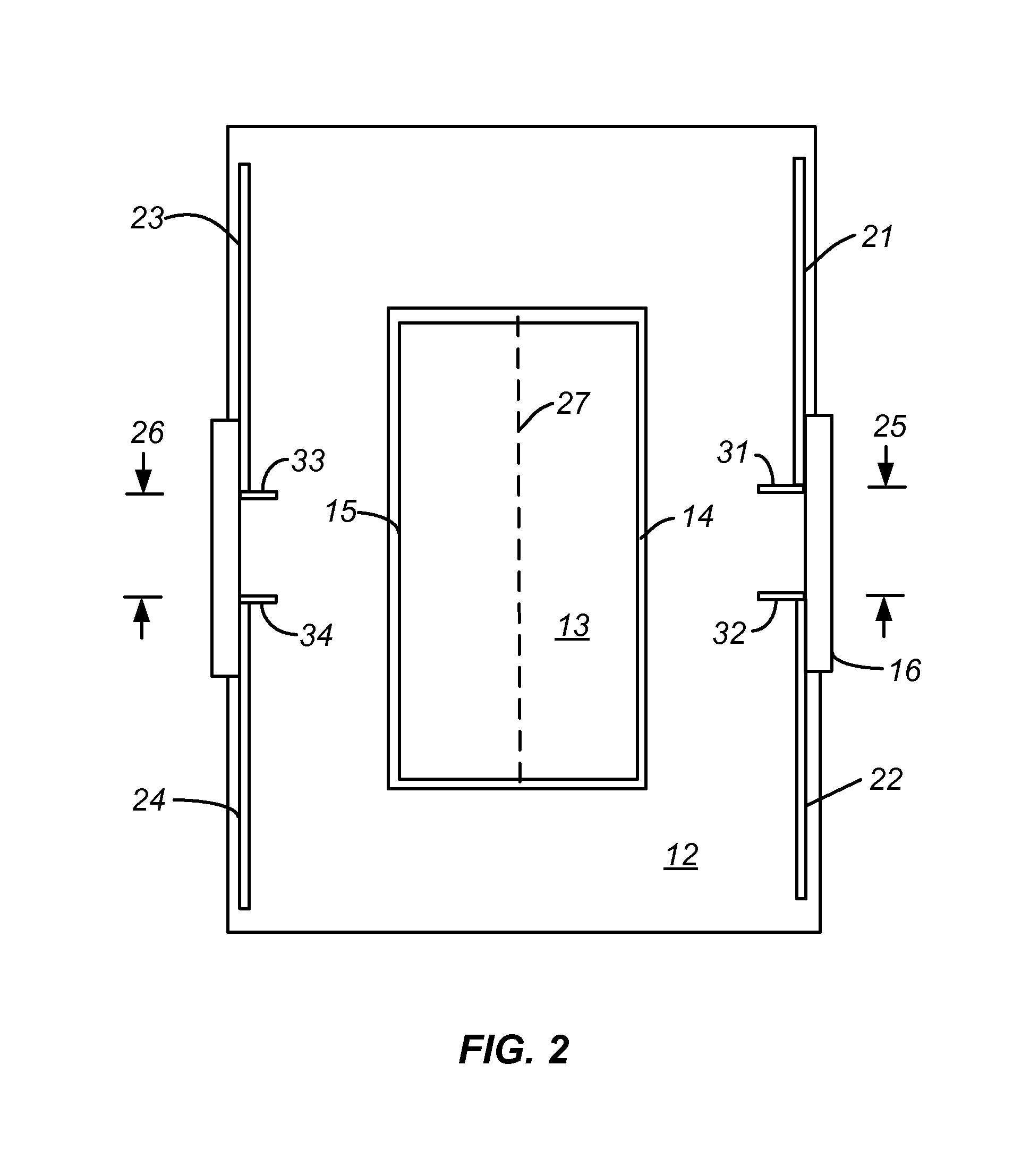Uniform epi-illumination of planar samples
a planar sample and epi-illumination technology, applied in the field of fluorescence imaging of planar samples, can solve the problems of high non-uniform illumination, correspondingly non-uniform sample signal, and reduction in intensity, so as to reduce the non-uniformity or eliminate the effect of substantially reducing the length of the illuminated area
- Summary
- Abstract
- Description
- Claims
- Application Information
AI Technical Summary
Benefits of technology
Problems solved by technology
Method used
Image
Examples
Embodiment Construction
[0010]High-intensity LED line lights are commercially available from a variety of suppliers. Examples are Edmund Optics Inc. of Barrington, N.J., USA, ProPhotonix Limited of Salem, N.H., USA, and Advanced Illumination, Inc., of Rochester, Vt., USA. The typical LED line light is a linear array of individual LEDs evenly spaced with approximately 0.5 mm between each adjacent pair in the array. In certain embodiments of the invention, however, the non-uniform spacings between individual LEDs can be beneficial, for example when significant decreases in intensity (intensity “roll-offs”) occur at the outer ends of the paired line lights. A spacing that decreases in the direction of the outer end can compensate for these decreases to assure that uniformity of intensity continues along the entire combined lengths of the two line lights, in addition to the region of the gap between the two line lights. The variation in spacing is readily determined by routine experimentation.
[0011]The length ...
PUM
 Login to View More
Login to View More Abstract
Description
Claims
Application Information
 Login to View More
Login to View More - R&D
- Intellectual Property
- Life Sciences
- Materials
- Tech Scout
- Unparalleled Data Quality
- Higher Quality Content
- 60% Fewer Hallucinations
Browse by: Latest US Patents, China's latest patents, Technical Efficacy Thesaurus, Application Domain, Technology Topic, Popular Technical Reports.
© 2025 PatSnap. All rights reserved.Legal|Privacy policy|Modern Slavery Act Transparency Statement|Sitemap|About US| Contact US: help@patsnap.com



